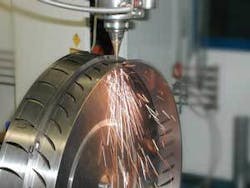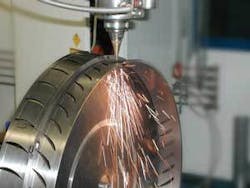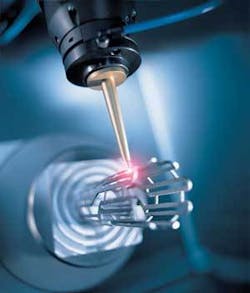No bridge too far
A well-defined customer base and strong business relationships are key to a successful operation
Martien H.H. van Dijk
The movie “A Bridge Too Far” is one of the impressive movies on battles in World War II. But where the bridge near Arnhem could not be taken, the bridge near Nijmegen was taken successfully. The strategic plan of Operation Market Garden turned out to be too ambitious. But without ambition and strategic planning there will be no success. This can be said about the company Reith Laser, a job shop located on an industrial estate near the town of Nijmegen in the Netherlands.
The company was founded in 1989 by Jan Reith. His first laser was a 1.5kW CO2 laser from PRC on a Balliu system. Like most of the job shops in those days the company was involved in 2D sheet metal cutting. Reith Laser was so successful that it bought a 2.5kW CO2 laser in 1992. But over time traditional sheet metal job shops also extended their capabilities by buying CO2 laser cutting systems. Even general machining companies that were subcontracting laser cutting to Reith Laser decided to invest themselves in laser cutting systems. The initial success of the company turned out to become a problem. Long-term cooperative agreements were aborted. This involved no more jobs with large badges that gave the company a solid financial base. As laser cutting had come out of its infancy, it looked as though it was also leaving the house were it had grown up.
So Jan Reith decided to change his strategy and focus on the more demanding jobs. He wanted to get away from the 2D cutting jobs and he didn’t want to compete with the traditional sheet metal job shops. So the company introduced a variety of Nd:YAG lasers for fine cutting, welding, and drilling applications, even though it was a time when it didn’t have the work load for the new equipment. Nowadays, in addition to the original CO2 laser systems, the company has seven Nd:YAG lasers in operation. Except for one 5-axis system, all systems are equipped with large tables, which make them suitable for products that are too large for most of the job shops.
Today Reith Laser services the fine mechanical industry, the medical industry, and the microelectronic industry. The company has a long-term relationship with almost every customer it serves. A direct contact between the specialists at Reith Laser and the customers’ engineers is one of the key elements for success. Normally a new customer will ask Reith Laser to realize what he thinks is the solution to his problem. He will be reluctant to share the information on his real problem. However, it turns out that by sharing the information on the problem an open discussion between the engineer and the laser specialist may solve the problem easier and more cost effectively. Furthermore, the education level of the Reith workforce is relatively high. And, according to Jan Reith, it is very difficult to find qualified personnel. The operators should have not only an understanding of the system’s CNC but also a good understanding of the laser optics and laser materials processing in general. Therefore the company is investing in the capabilities of its workforce by training in-house as well as externally.
According to Jan Reith, another key factor to success is the relation with system builders and laser manufacturers. Based on his experience he may have a very specific idea about how a new system should be made. It may take a lot of discussion to find a system integrator that is willing to listen to the company and is willing to build a system that fulfils the special wishes. Their response during the selection of a new system and their after-sales support are important to achieve the targets of capabilities and availability that are needed to be a reliable source in servicing the customers of Reith Laser.
In order to meet the needs of customers in the medical and microelectronic industry Reith Laser has to comply with their quality regulations and standards. This means that the company has to go through a number of qualification audits to get the approvals. Additionally, the company is facing increasingly strict environmental regulations. But Jan Reith realizes that complying with all these rules gives the company a competitive edge over the more general machining houses and job shops. As Nijmegen is located near the German boarder, the company is also servicing customers on the other side of that boarder.
Walking through the building gives an impression of the growth of the company over the last ten years. The place is full of equipment. However the plan for a new building is made and according to this plan the company will move into the new building by the end of this year. In order to serve customers better the new building will have a class 10,000 cleanroom. Special attention will also be given to minimization of the energy consumption.
Without a doubt, the company has selected a new target and is working according to a well-defined strategy. As a real entrepreneur, Jan Reith is following the development of laser materials processing while at the same time he is anticipating the needs of the fine mechanical, medical, and microelectronic industry. Cooperation with laser manufacturers and system builders as well as continuous training of the workforce are key factors to success.


